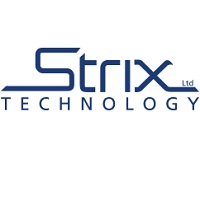Keeping food fresher for longer is a priority for anyone who values sustainability, cost savings, and a balanced diet. Vacuum storage offers an effective way to extend shelf life, preserve nutritional quality, and reduce waste by slowing down natural deterioration. Whether used professionally or in the home, this method enhances food safety and convenience, making it an essential tool for those looking to maintain a well-stocked and organised kitchen.
Vacuum storage works by removing oxygen from the packaging, reducing the potential for bacterial growth and oxidation. By creating a hermetic seal using stoppers, zips, or heat sealing, food remains fresh until its expiry date. This method is suitable for raw and cooked food, whether plant-based or animal-based, and is particularly effective for freezer storage, preventing “freezer burn” that affects taste and texture.
Contrary to common belief, vacuum storage is not exclusive to high-end restaurants. A variety of household appliances now make it accessible to home users. A vacuum sealer is the key tool required, available in compact and professional models, each with different functionalities. Some are small enough to store in a kitchen drawer, while others offer advanced features for heavy use. Alongside the sealer, plastic vacuum bags and rigid containers—made of plastic or glass—are essential for secure storage. Many of these containers can store liquid-based food, adding to their versatility.
The advantages of vacuum storage go beyond freshness. Removing oxygen dramatically slows bacterial growth, preventing premature spoilage and extending the lifespan of perishable foods such as cheese, meats, and vegetables. Oxidation is also reduced, keeping foods like sliced apples looking fresh and appetising. This method also leads to significant cost savings, allowing bulk purchases without the risk of waste. Additionally, vacuum-sealed portions help keep fridges and pantries well-organised while preventing cross-contamination, which is particularly beneficial for households managing food allergies or dietary restrictions.
To ensure safety and efficiency, it is crucial to follow best practices when using vacuum storage. Using only containers and bags designed for vacuum sealing ensures an airtight seal, while following the manufacturer’s instructions prevents malfunctions. Regularly inspecting bags and seals helps maintain effectiveness, and while vacuum storage extends food life, it does not make food last indefinitely—proper monitoring remains essential.
Vacuum storage is an excellent way to preserve food’s quality, reduce waste, and make meal planning more efficient. By incorporating this method into daily routines, individuals can enjoy fresher, healthier meals while maintaining a sustainable approach to food consumption.
Strix Group plc (LON:KETL) is a global leader in the innovation, design, manufacture and supply of kettle safety controls, heating and temperature controls, steam management and water filtration technologies.

